Project News ·
Meet the leaders connecting community action across the Great Barrier Reef
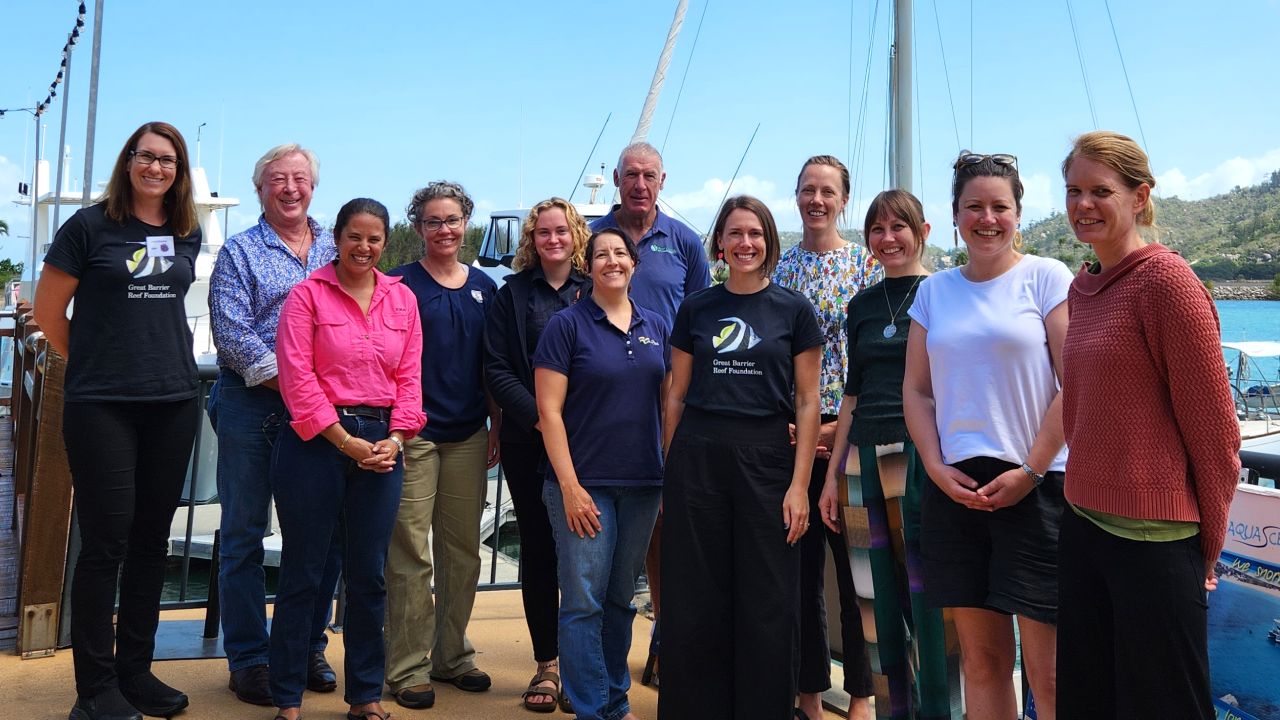
The Community Action Plan (CAP) Program is a pilot program for place-based collaborative planning and delivery to enhance community Reef protection for the Great Barrier Reef World Heritage Area.
From 2020, in six regions across the GBR, CAP Leader organisations brought together science, management, community, youth, business, and Traditional Owner partners to collaboratively plan for community action. The program quickly translated planning into action through seed funding for 15 community and Traditional Owner led projects to deliver on the CAP priorities.
Projects have developed integrated community monitoring plans, launched new community mangrove monitoring baselines, undertaken litter removal and reduction, launched turtle protection initiatives, contributed to catchment revegetation activities, and built youth leadership.
For the first time since the Program’s inception, Community Action Plan Leaders met face-to-face in October 2023 for a two-day forum on Yunbenun-Magnetic Island to share and learn from each other and explore connections across regions and for the future.
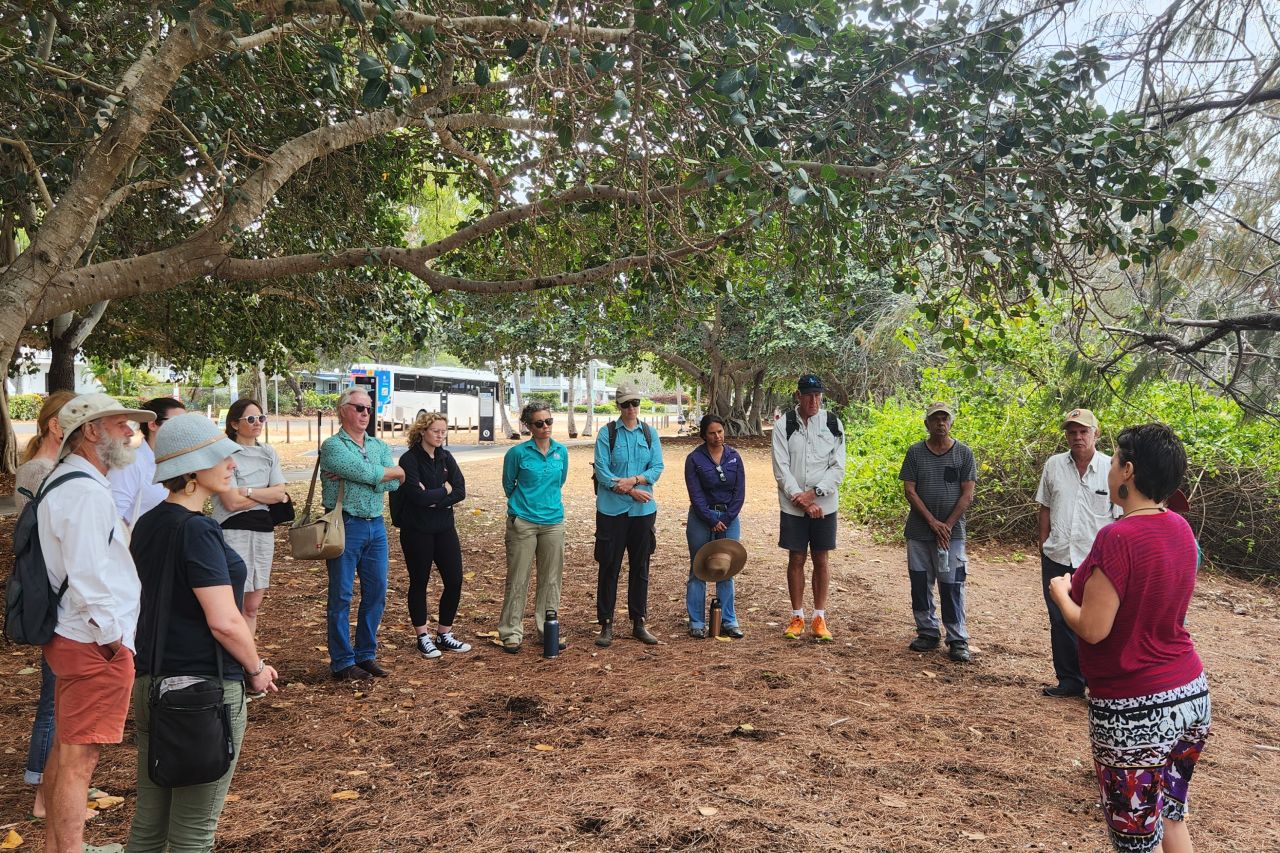
CAP Leaders learning about the impact and learnings from the citizen science projects at Geoffrey Bay. Credit: Laura Dunstan/GBRF
A chance to connect and reflect
The forum began with a field trip to connect with place and people. It included a Welcome to Country by Wulgurukaba Elders and site visits to learn about three interconnected projects and hear directly from community partners leading the work.
Keith Noble from the Townsville CAP shared that it's valuable “Meeting other people and seeing the way the CAPs are running. Seeing what other organisations are doing, seeing the opportunities for collaboration.”
During the forum, the group reflected on the program to date, and explored ways to maintain and grow legacy from the program for the future.
While looking back on the biggest changes from CAPs to date, a key theme that emerged across regions was the role that CAPs play in strengthening community Reef protection outcomes through building collaboration and capacity for action. In particular, CAP Leaders reflected on improved relationships, engagement, and leadership pathways with Traditional Owners and youth enhanced through the more inclusive and collaborative approach.
“There’s a lot that the CAP program can prove about collaboration. There’s huge value in giving people a voice and opportunity to actually lead Reef-based actions in their own communities,” said Capricorn Coast CAP project leader Rebecca French.
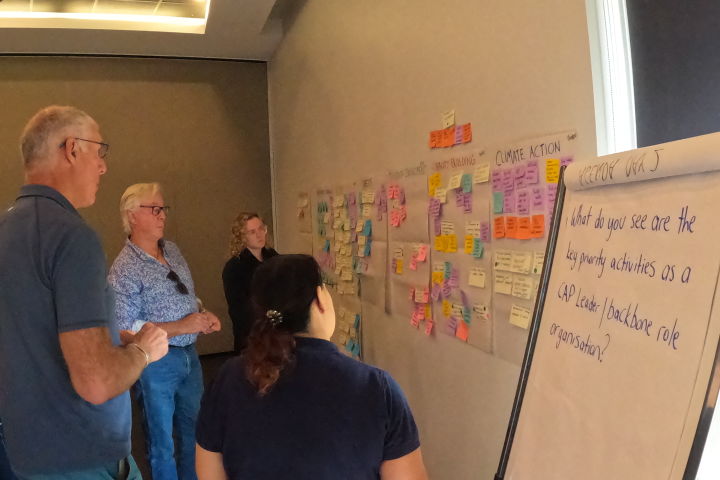
CAP Leaders brainstorming ideas for future collaborations and legacy. Credit: Jenn Loder/GBRF
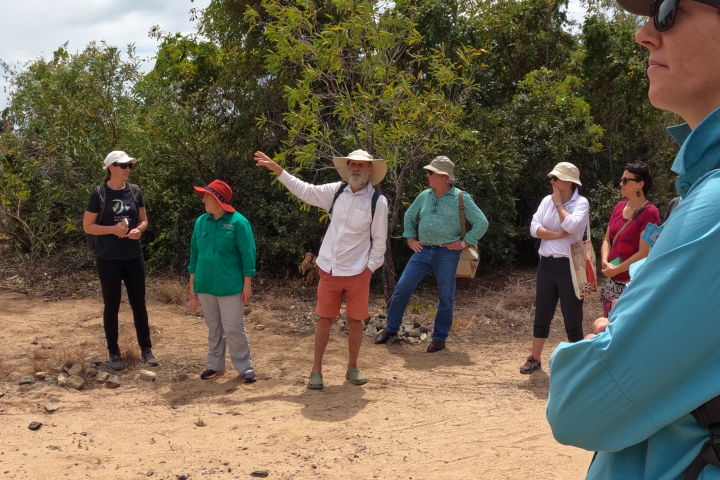
CAP Leaders learning about the impacts and learnings from the MINCA World Heritage Values project at Horseshoe Bay. Credit: Jenn Loder/GBRF
Key CAP achievements
The CAP Program has helped connect the people activating their communities in caring for the Reef, with evidence of enhanced relationships across partners for driving coordinated and collaborative action. CAP Leader organisations are providing an essential backbone role to support more coordinated community networks that can learn from each other, identify linkages, and explore ways to work better together.
“Community-delivered projects multiply their effects. There is more that can be achieved by a million people doing one thing than one person doing a million things. Community driven projects achieve more action,” said Burnett Baffle CAP Leader Misty Neilson.
Some key achievements across CAPs to date include:
- The South East Cape York CAP has enabled new youth initiatives and Traditional Owner leadership and partnerships (learn more in this Case Study). Binthi Land Holding Group developed a Healthy Country Plan, successfully nominated for National Heritage Listing and won several grants to leverage further outcomes. A new Young Reef Leaders program has also been launched.
- The Townsville CAP has helped to catalyse a stronger collective impact approach for the region, with a long-term legacy through the Dry Tropics Healthy Waterways Partnership platform.
- The Yunbenun CAP catalysed a united multiple partners for a cohesive island-wide plan and launched the first community reef health monitoring project with the Reef Authority (learn more in this Case Study).
- The Mackay Whitsundays Isaac CAP is applying storytelling to drive action and helped launch a new pilot project to reduce food and organics waste in schools to tackle local climate emissions (learn more in this Case Study).
- The Capricorn Coast CAP and projects are enabling the next generation of Reef leaders with multiple youth initiatives, including the launch of the Team Hatchlings marine turtle program.
- The Burnett Baffle CAP is fostering collaboration with Traditional Owners and community groups. It catalysed the Queensland Marine Turtle Network and forum, bringing together turtle monitoring and conservation community practioners from across Queensland for the first time.
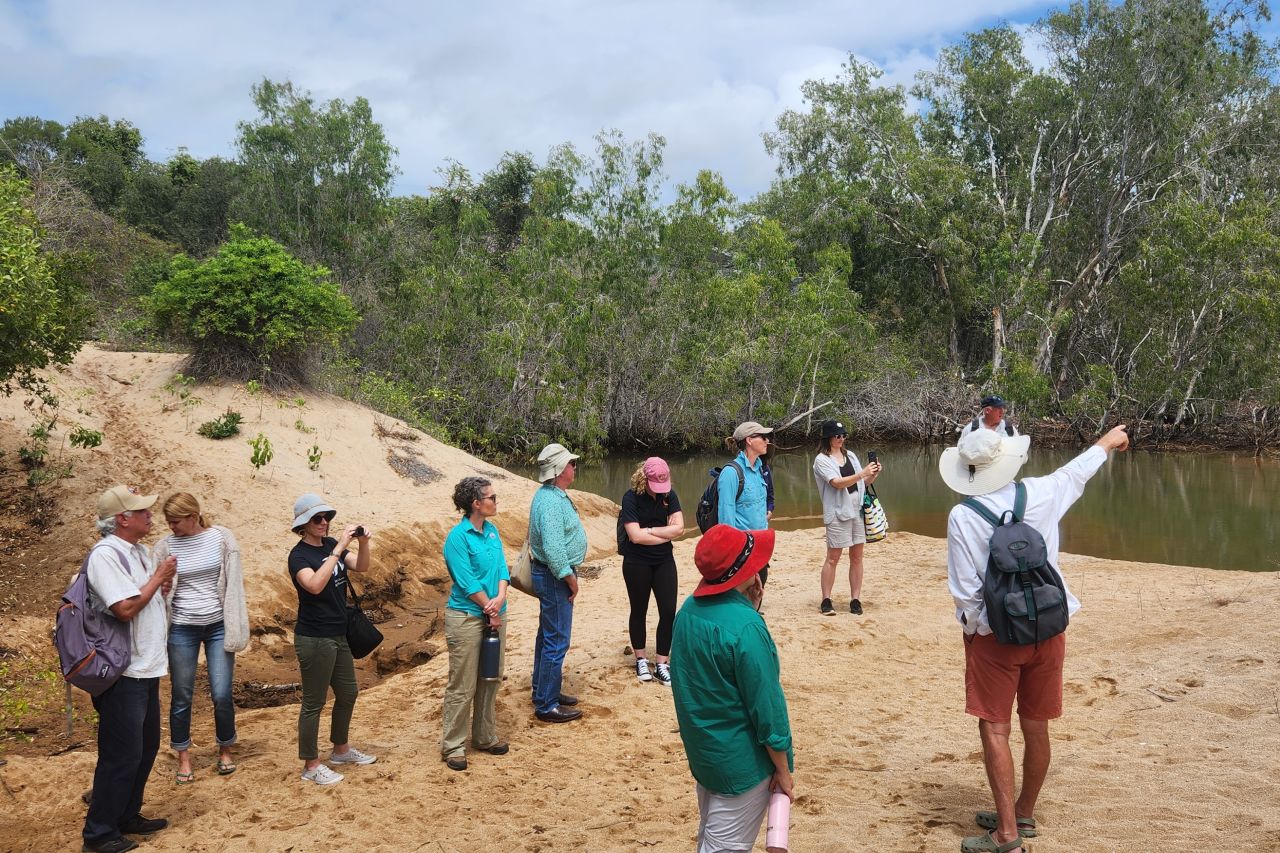
CAP Leaders learning about the impacts and learnings from the MINCA World Heritage Values project at Horseshoe Bay. Credit: Laura Dunstan/GBRF
Strengthening connections
Together, we’re learning more about connecting and enabling community networks to drive outcomes for the Reef and community.
CAP Leaders have demonstrated commitment, passion and dedication to maintaining and building on the momentum in their regions and across the Reef. The group reflected that a valuable part of their role is building broader capacity and support for community efforts as a critical contributor for caring for the Reef and Reef communities.
“CAP Leaders are passionate about their communities, their relationships with the Reef and what they can do to empower people and protect natural assets. I’m looking forward to the continuing relationship and collaboration, together we are much stronger than we are separately,” said Townsville CAP Leader Adam Smith.
Top photo: CAP Leader organisations, GBRF and Conservation Management staff at the CAP Leader forum on Yunbenun-Magnetic Island. Credit: Laura Dunstan/GBRF
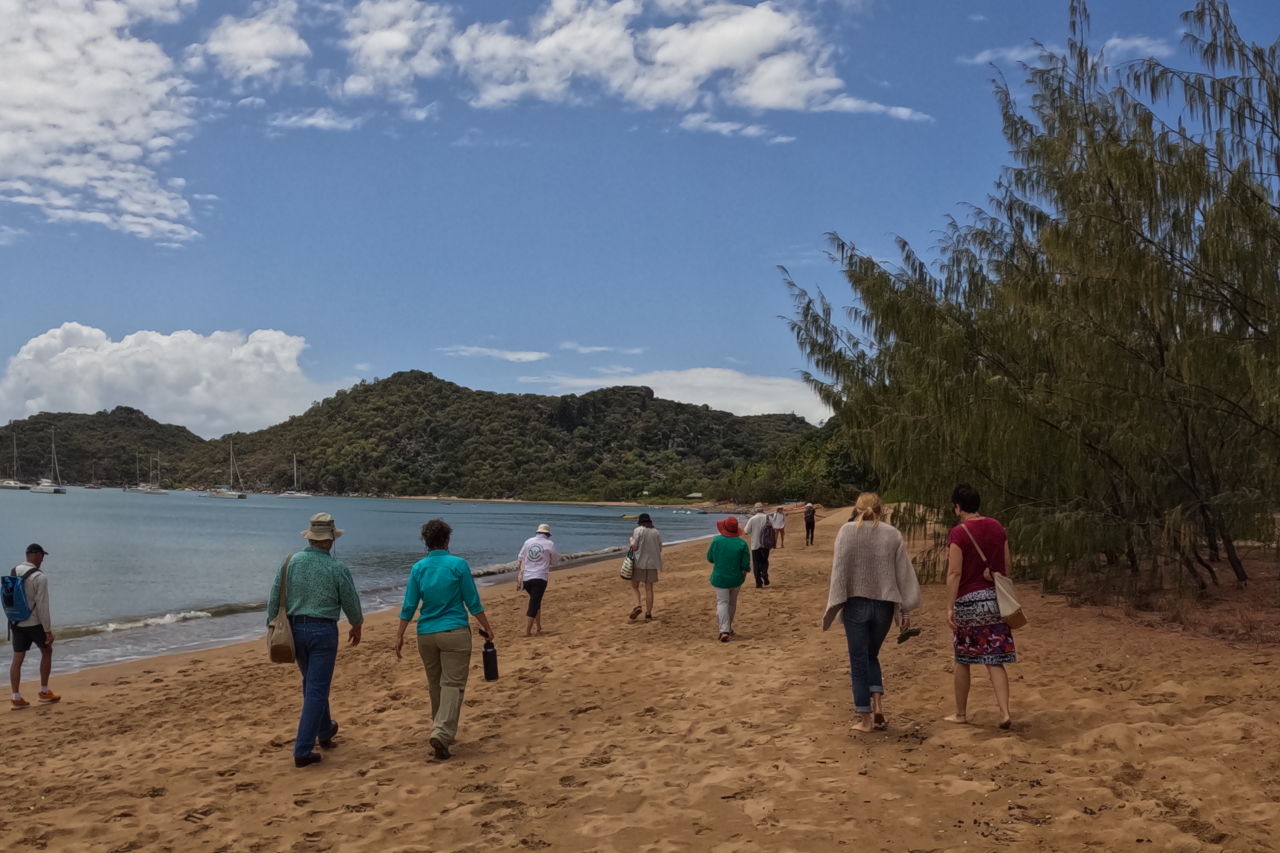
Field trip to Yunbenun-Magnetic Island CAP Project sites. Credit: Jenn Loder/GBRF
The Community Action Plan program is funded by the partnership between the Australian Government’s Reef Trust and the Great Barrier Reef Foundation, with delivery by Community Action Plan Leaders and their communities, with facilitation from Conservation Management and social science support from the University of Queensland.
#Related
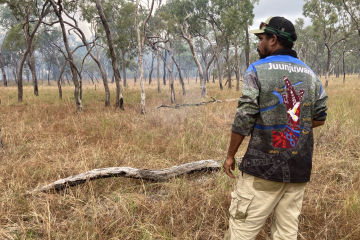
Project News ·
Community at the forefront of Reef water quality protection

Project News ·


